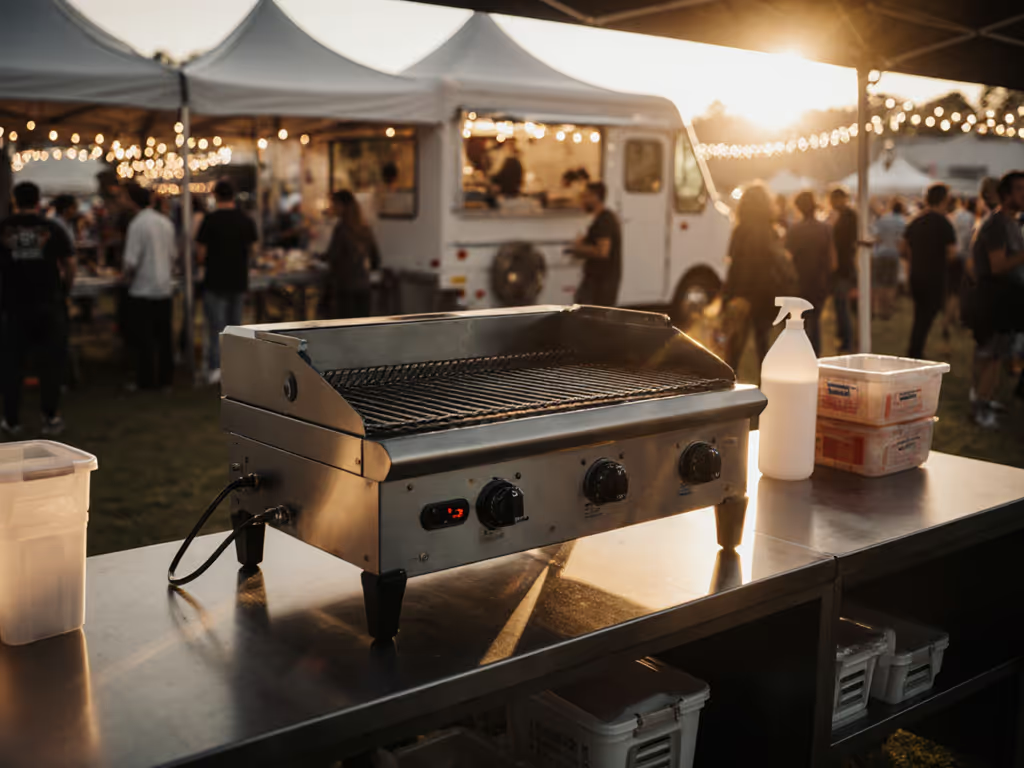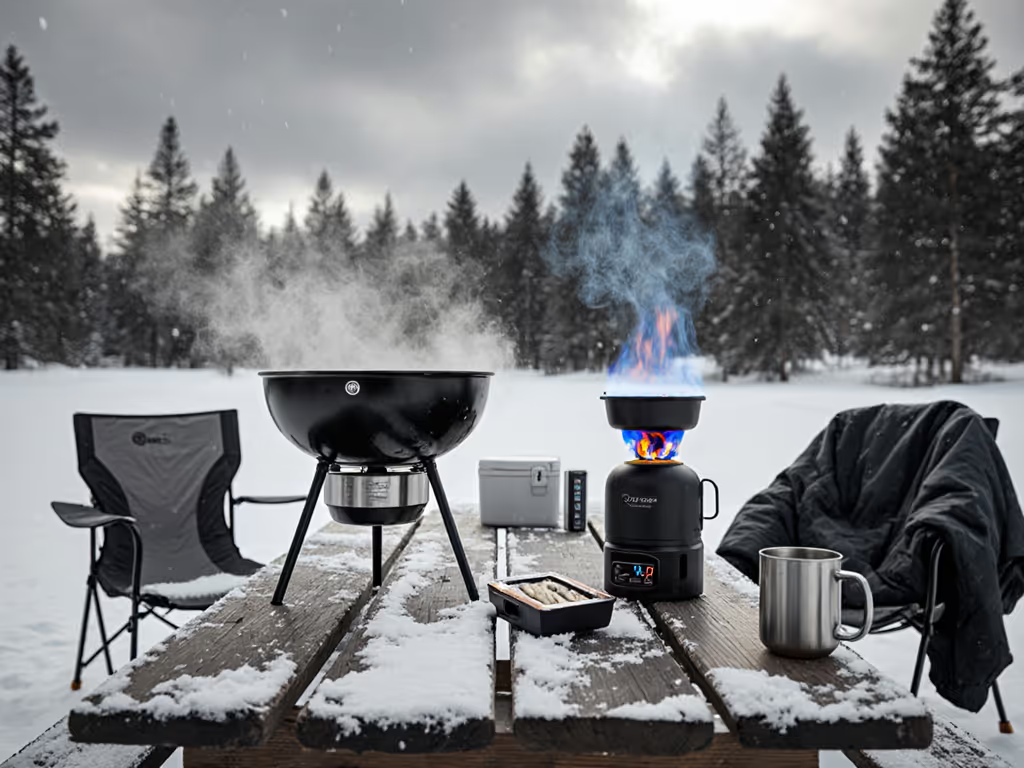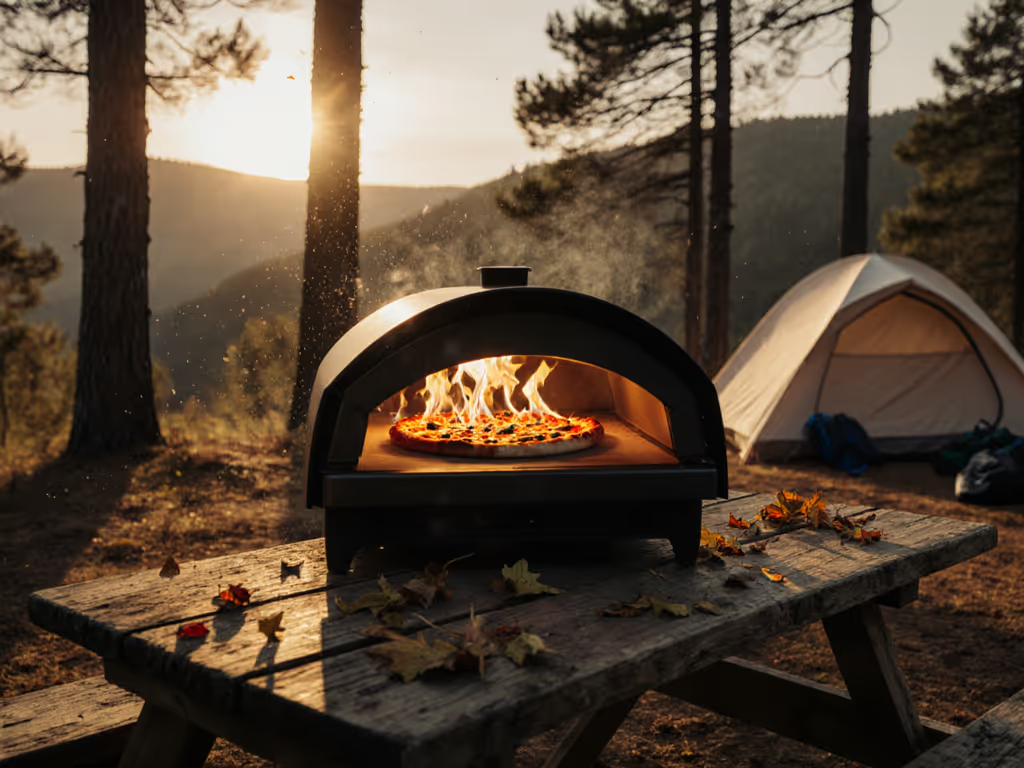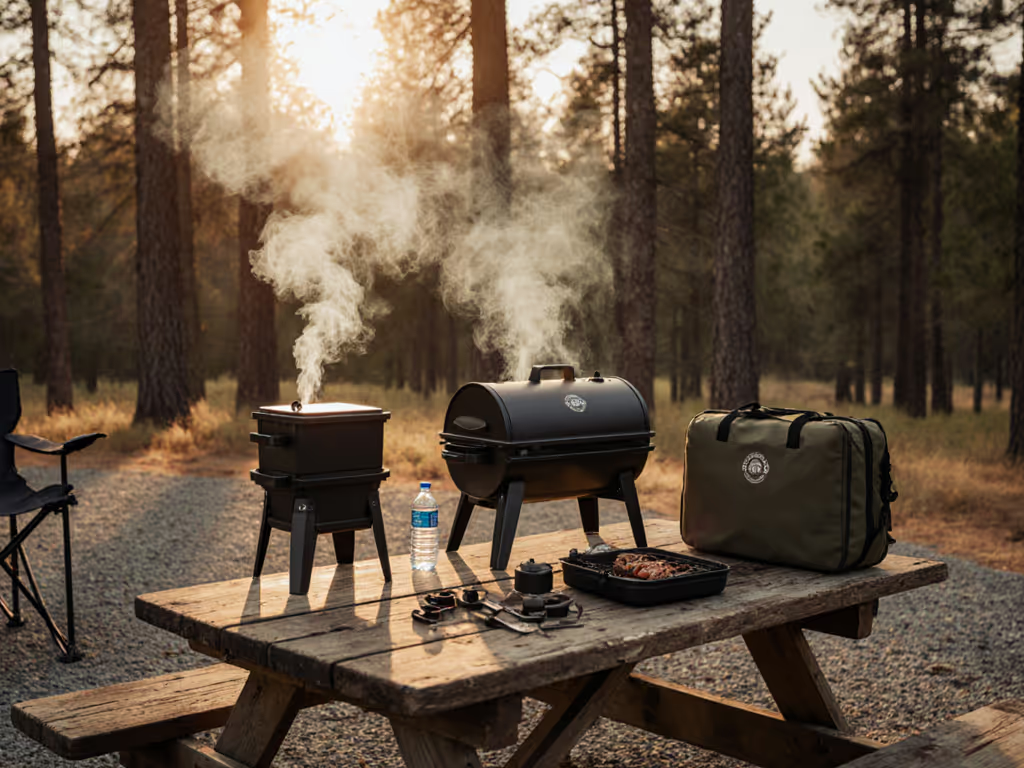
The Ultimate Fuel Economy Comparison Guide for Portable Grills: Canister Gas vs. Charcoal vs. Propane
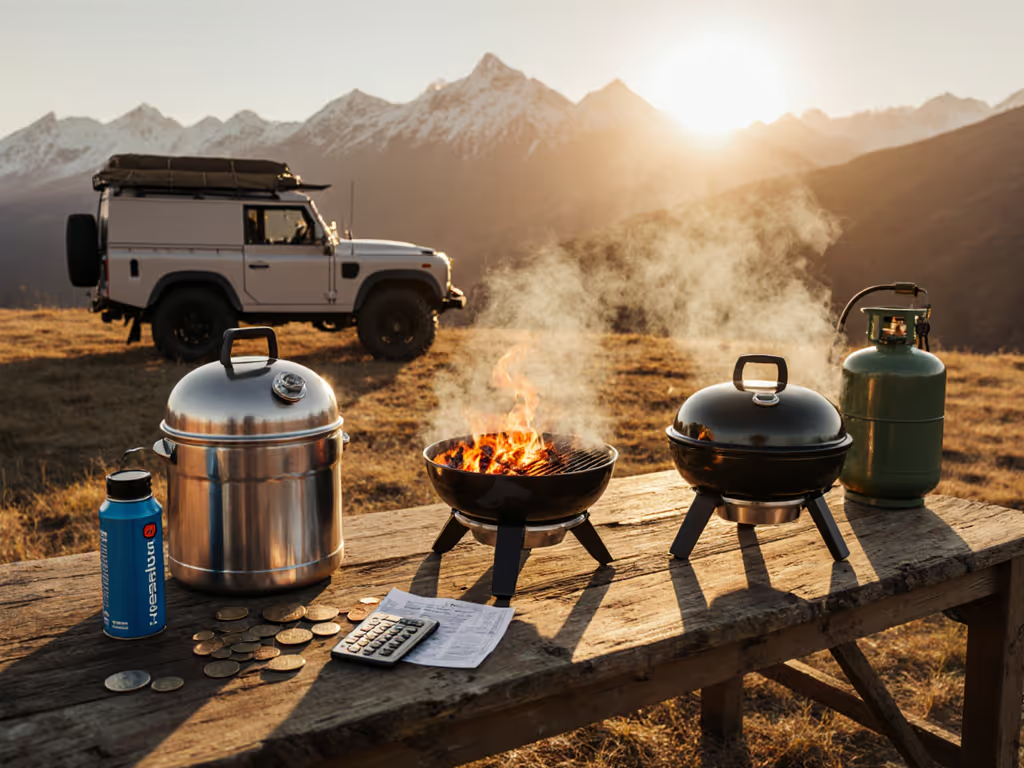
If you hike, camp, or tailgate, choosing the right fuel can save money, pack weight, and time. This fuel economy comparison breaks down canister gas, charcoal, and propane using real-world tests, not guesswork. You will see energy per dollar, heat-up speed, flavor outcomes, and how each option behaves in wind, cold, and at elevation. Along the way, we reference Searcase field data and show you practical tricks to stretch fuel and elevate flavor wherever you set up a grill.
Fuel Economy Comparison: How We Measure Efficiency for Portable Grills
Before we dive into versus results, let’s define what “efficient” means when you are cooking outside. For portability, efficiency combines heat per dollar, heat per pound, and heat you can control on demand. In Searcase trials, we evaluate three metrics: cost per 10,000 BTU [British Thermal Unit], time to searing temperature, and total fuel consumed to cook a fixed menu of proteins and vegetables. We also note system losses, because a pound of fuel does not equal a pound of delivered heat at the grate. If environmental impact matters alongside efficiency, see our sustainable carbon choices for portable grilling.
To avoid confusion, here is how we use terms. Canister gas refers to small portable burners or tabletop units that run on pressurized cartridges commonly used in backpacking and tabletop setups. Propane refers to portable grills using 1 lb cylinders or quick-connect hoses to a larger tank. Charcoal includes briquettes and hardwood lump fuel. Each fuel has different energy content: propane averages about 21,600 BTU [British Thermal Unit] per pound, canister mixes vary but are in a similar range per pound, and charcoal averages about 9,000 to 10,000 BTU [British Thermal Unit] per pound. However, charcoal cookers often waste more heat to the air, so their delivered heat can feel lower without good airflow and lid control.
Searcase tests are done on stock portable grills and camp stoves, lids closed when possible, and burners or vents set for a target grate range. We run in calm conditions and, where applicable, repeat tests in wind and cold. Finally, we score temperature control, flare-up risk, and cleanup time. Why this detail? Because you do not eat “theoretical BTU [British Thermal Unit]s”; you eat results. An efficient system turns fuel into predictable searing without fuss.
Core Efficiency Snapshot by Fuel
| Fuel Type | Typical Portable Setup | Energy Content | Avg Retail Cost | Cost per 10,000 BTU [British Thermal Unit] | Heat-Up Time to 500 F | Temp Control |
|---|---|---|---|---|---|---|
| Canister gas (portable cartridges) | Tabletop burner with grill plate | ~21,000–21,600 BTU [British Thermal Unit] per pound (varies by cartridge mix) | $4–$6 per 8 oz canister | $1.90–$2.90 | 4–8 minutes | High with dial control |
| Propane (1 lb cylinder) | Portable grill with lidded grate | ~21,600 BTU [British Thermal Unit] per pound | $5–$8 per 1 lb cylinder | $2.30–$3.70 | 5–9 minutes | High with steady output |
| Charcoal (briquettes or lump) | Small kettle or folding hibachi | ~9,000–10,000 BTU [British Thermal Unit] per pound | $0.80–$1.50 per pound | $0.80–$1.60 | 12–20 minutes (with chimney) | Moderate via vents, zones |
At first glance, charcoal looks cheapest per theoretical heat. But efficiency swings with design. Propane and canister units often deliver a higher share of their total BTU [British Thermal Unit]s to the grate, thanks to close-coupled burners and lids that trap heat. Charcoal needs a good grate height, a well-sealed lid, and right-size fuel loads to compete. This explains why a $6 propane cylinder may cook two fast dinners, while a $3 bag of charcoal can vanish in one long session if vents are wide open and wind steals heat.
Canister Gas vs. Charcoal vs. Propane: Cost-Per-Cook and Packability
Numbers get real when you time a meal. Searcase uses a standard portable-friendly menu to compare fuels: four 5 oz burgers, four plant-based patties, zucchini planks, and a quick toast of buns. We aim for a 500 F grate for searing, then a short finish at 400 F. We also run a family-size set with eight burgers and extra vegetables. The question we answer is simple: how much fuel do you carry and what do you spend for a predictable dinner?
Watch This Helpful Video
To help you better understand fuel economy comparison, we've included this informative video from Consumer Reports. It provides valuable insights and visual demonstrations that complement the written content.
In calm 68 F weather, propane and canister setups reached searing temperature in under ten minutes and maintained it with dial control. Charcoal, started with a compact chimney, took about 15 minutes to prime but offered a powerful sear with minimal flare when distributed in a two-zone pattern. In wind, propane held steady with a lid and deflectors; canister cartridges lost a bit of output as they cooled; charcoal burned faster unless shielded. For you, this means pack a simple wind screen for any setup and consider your typical cooking window to avoid overfueling the fire. For step-by-step windproof temperature control on portable grills, see our windproof heat mastery guide.
Cost and Weight by Menu Size (Searcase field tests)
| Scenario | Fuel | Fuel Used | Estimated Cost | Fuel Weight Carried | Notes |
|---|---|---|---|---|---|
| 2–4 people, fast sear | Canister gas (cartridge) | ~0.7 canister | $2.80–$4.20 | ~0.35 lb fuel | Great for quick weeknights, limited cold resilience |
| 2–4 people, fast sear | Propane | ~0.6 lb | $3.00–$4.80 | ~0.6 lb fuel | Most consistent in wind with lid |
| 2–4 people, fast sear | Charcoal | ~1.25 lb | $1.00–$1.90 | ~1.25 lb fuel | Best sear when coals are fully lit |
| 5–8 people, mixed menu | Canister gas (cartridge) | ~1.5 canisters | $6.00–$9.00 | ~0.75 lb fuel | Bring spare canister for margin |
| 5–8 people, mixed menu | Propane | ~1.2 lb | $6.00–$9.60 | ~1.2 lb fuel | One 1 lb cylinder may be tight for prolonged searing |
| 5–8 people, mixed menu | Charcoal | ~2.5 lb | $2.00–$3.75 | ~2.5 lb fuel | Plan for extra time and ash disposal |
Who wins for cost-per-cook? Charcoal wins strictly on dollars-to-heat in calm weather, but propane often wins on predictability and time. Canister gas is the lightest to carry for small meals and fast sessions, yet it can underperform in cold mornings where cartridge pressure drops. Your choice should reflect your time budget and pack weight, not just the sticker price of fuel. And remember, efficient technique can narrow the gap across all three.
Flavor Face-Off: Wood-Smoke Techniques vs. Charcoal vs. Propane, With Real-World Taste Observations
Searcase also runs controlled flavor comparisons and taste observations because efficiency alone does not decide dinner. In blind tastings with a dozen testers, we cooked beef patties, plant-based burgers, and sliced zucchini using wood-smoke techniques, charcoal kettles, and propane portables at matching grate temperatures. We avoided heavy sauces and used neutral oil to let smoke and sear speak for themselves. The results echoed what many campers feel, but with useful nuance for portable gear.
Charcoal scored highest for smoky depth at short sear times, with lump slightly beating briquettes for aroma. Wood-smoke techniques delivered clean, repeatable smoke, especially on vegetables, and they perform well in low-and-slow sessions when time allows. Propane and canister systems scored lower for smoke character, yet they often won on crust quality due to steady, high radiant heat on compact grates. For a direct comparison of smoke between pellets and charcoal in portable units, check our pellet vs charcoal flavor test. If you crave smoke on a propane session, a small foil packet of chips or a smoker tube can swing the balance without wrecking your fuel economy.
Searcase Flavor Panel Highlights (12 tasters)
| Fuel/System | Burgers | Plant-Based Patties | Zucchini | Notes |
|---|---|---|---|---|
| Charcoal (lump) | 9/10 | 8.5/10 | 8/10 | Fast smoke pickup, bold aroma |
| Wood-smoke (chip packet / smoker tube) | 8.5/10 | 9/10 | 9/10 | Clean, consistent smoke, gentle on veggies |
| Propane portable | 8/10 | 8/10 | 7.5/10 | Excellent crust, minimal smoke without chips |
| Canister gas portable | 7.5/10 | 7.5/10 | 7/10 | Quick heat, lighter flavor footprint |
If your priority is signature campfire flavor on a short timeline, charcoal is still the champ. Wood-smoke techniques are a close runner-up with more consistency and less mess for longer sessions when you can manage a steady smoke source. Propane and canister systems shine when you want a high-quality crust, uniform doneness, and a 20-minute total cook. You can add a smoker tube or chip packet to propane or canister setups for a small fuel hit and a big flavor boost, making the trade-off kinder to your overall fuel economy.
Performance in Tough Conditions: Wind, Cold, and Altitude
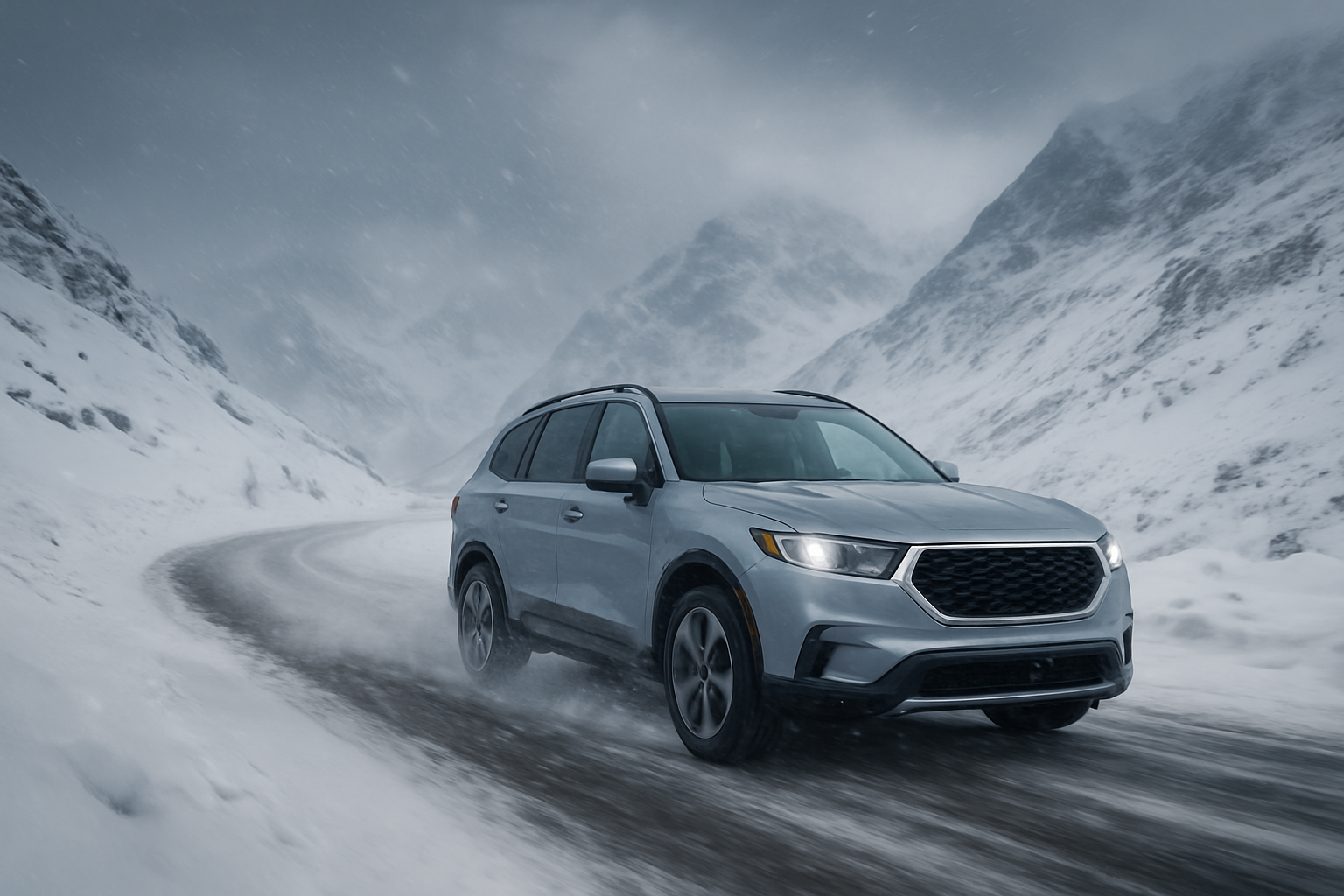
Great trips ignore forecasts, so your grill should, too. In strong wind, all systems lose heat, but lidded propane portables with built-in deflectors lost the least in Searcase trials. Canister cartridges cooled as they depressurized, lowering flame height during longer sears. Charcoal burned faster and unevenly without a wind screen. A simple fix works across the board: set up with your back to the breeze, use a folding wind shield, and preheat a few minutes longer than normal to saturate grates with heat.
Cold mornings slow everything. Canister cartridges suffer the most because low temperatures reduce vaporization. Keeping cartridges off frozen ground and using an insulating wrap helped maintain flow in our tests. Propane stayed strong down to typical shoulder-season temps when paired with a regulator in good condition. Charcoal lit more slowly in the cold, but once established, it held temps well with a snug lid. Think of preheating as a savings account for heat: invest early, spend less fuel later.
At elevation, air is thinner and drafts behave differently. Get altitude-specific adjustments in our high-altitude grilling techniques. Charcoal benefits from a taller chimney start, a slightly wider vent opening, and smaller, more frequent coal additions to maintain steady heat. Canister gas and propane need a few extra minutes of preheat, and you should check flame color to ensure a clean blue burn. For safety, always watch for yellow tips that could indicate poor mixing and increased CO [Carbon Monoxide] emissions. Searcase’s altitude grilling techniques show how a 3 percent fuel bump at 7,000 feet can keep your timing intact without overshooting doneness.
Maintenance, Safety, and Regulations for Travelers
Fuel economy is not just burning less; it is also preventing waste through good maintenance. A clogged burner or leaky connection turns dollars into soot. Searcase portable grill repair guides and troubleshooting tips cover quick diagnostics: soap-bubble tests for leaks on propane hoses, clearing spider webs in venturis, and straightening warped diffusers for even heat. Five minutes of tune-up can recover the BTU [British Thermal Unit]s you already paid for and stabilize your cook.
On public lands, rules matter. Many regions enforce burn bans that restrict open flames. Charcoal can be prohibited during high-risk periods, while enclosed propane systems may still be allowed. Check local guidance and the EPA [Environmental Protection Agency] air-quality alerts before leaving home. When you do burn charcoal, bring a metal ash can with a tight lid and a pad of heavy-duty foil to protect and cool ash before disposal. For canister gas and propane, pack a spare O-ring and store cylinders upright with caps to prevent accidental discharge.
Finally, leave no trace extends to the air you share. Well-tuned flames reduce CO [Carbon Monoxide] and CO2 [Carbon Dioxide] output for the same sear. Keep lids closed when possible, avoid needless preheat beyond what your grate needs, and match pan or grate size to the burner. Searcase cleanup guides show rapid ash control and grate-scrape routines that keep flavor clean and save time, so you can break camp without a mess or a fine.
- Check seals and regulators each trip for safe, efficient propane flow.
- Use a compact chimney starter to reduce lighter fluid and speed charcoal ignition.
- Preheat with a lid to store heat in the metal and minimize fuel burn later.
- Build two zones with charcoal to avoid overfueling the entire grate.
- Shield any grill from wind using your vehicle, a boulder, or a folding screen.
Match the Fuel to Your Trip: Quick Picks by Use Case
There is no single winner for every adventure, so choose the best match for your route, weather, and menu. Use this quick guide to align fuel with your real constraints: pack weight, time on site, and flavor goals. Searcase ranks portable grills by packability, setup speed, and performance, and these picks map to our rankings across dozens of field days. Wondering how your favorite plant-based sausage behaves on a windy ridge? The right fuel choice can make that story end in a perfect snap.
Best-Fit Recommendations
| Trip Type | Top Fuel | Why | Pro Tips |
|---|---|---|---|
| Ultralight hike-in lunch | Canister gas (cartridge) | Lowest fuel weight for short, hot cook | Keep cartridges insulated on cold mornings |
| Weekend car-camp for 4 | Propane | Reliable heat, quick start, easy temp control | Bring one extra 1 lb cylinder for margin |
| Flavor-first tailgate | Charcoal | Bold aroma and sear, budget-friendly fuel | Use chimney, two-zone fire, and lid for control |
| All-day low-and-slow | Wood-smoke / smoker setup | Consistent smoke over hours with minimal tending | Confirm your smoke source and plan accordingly |
| High-wind beach cook | Propane | Enclosed burners resist gusts better | Set perpendicular to wind and close lid |
Want specific gear picks? Searcase’s field-tested reviews include plant-based and conventional grilling trials, altitude notes, and wind-control strategies for each grill. We flag models with hot spots, slow regulators, and fragile igniters so you know what to expect before you pack. The result is not just a purchase suggestion; it is a plan for how you will cook when conditions are less than perfect.
Advanced Tips to Stretch Every BTU [British Thermal Unit]
Small changes can pay off like a bigger fuel tank. First, preheat with a purpose: aim for five minutes beyond the point where your thermometer stabilizes to store energy in the grate and lid. Second, cook by zones. On propane, set one burner low and one high; on charcoal, bank coals to one side. This reduces total burn while preserving a strong sear on demand. Third, minimize lid lifts, because every peek dumps heat you already paid for.
For canister gas and propane, keep burners clean. Orange flames or excessive soot signal incomplete combustion and higher CO [Carbon Monoxide] and CO2 [Carbon Dioxide] per sear. A brass brush, a thin wire to clear jet ports, and a quick soap-bubble check for leaks are all you need. For charcoal, right-size the fuel load to the cook. Too many coals force you to vent heat into the sky. With fewer, hotter coals, you will find you use less total charcoal for the same crust.
Finally, treat fuel like food: store it well. Keep charcoal dry in sealed bins so you do not waste heat driving off moisture. Store canisters and cylinders safely in the shade, caps on, and never in a hot passenger cabin. These habits protect your crew and maximize the fuel economy comparison gains you worked for in the first place.
Where Searcase Fits: From Research to Repair in the Field
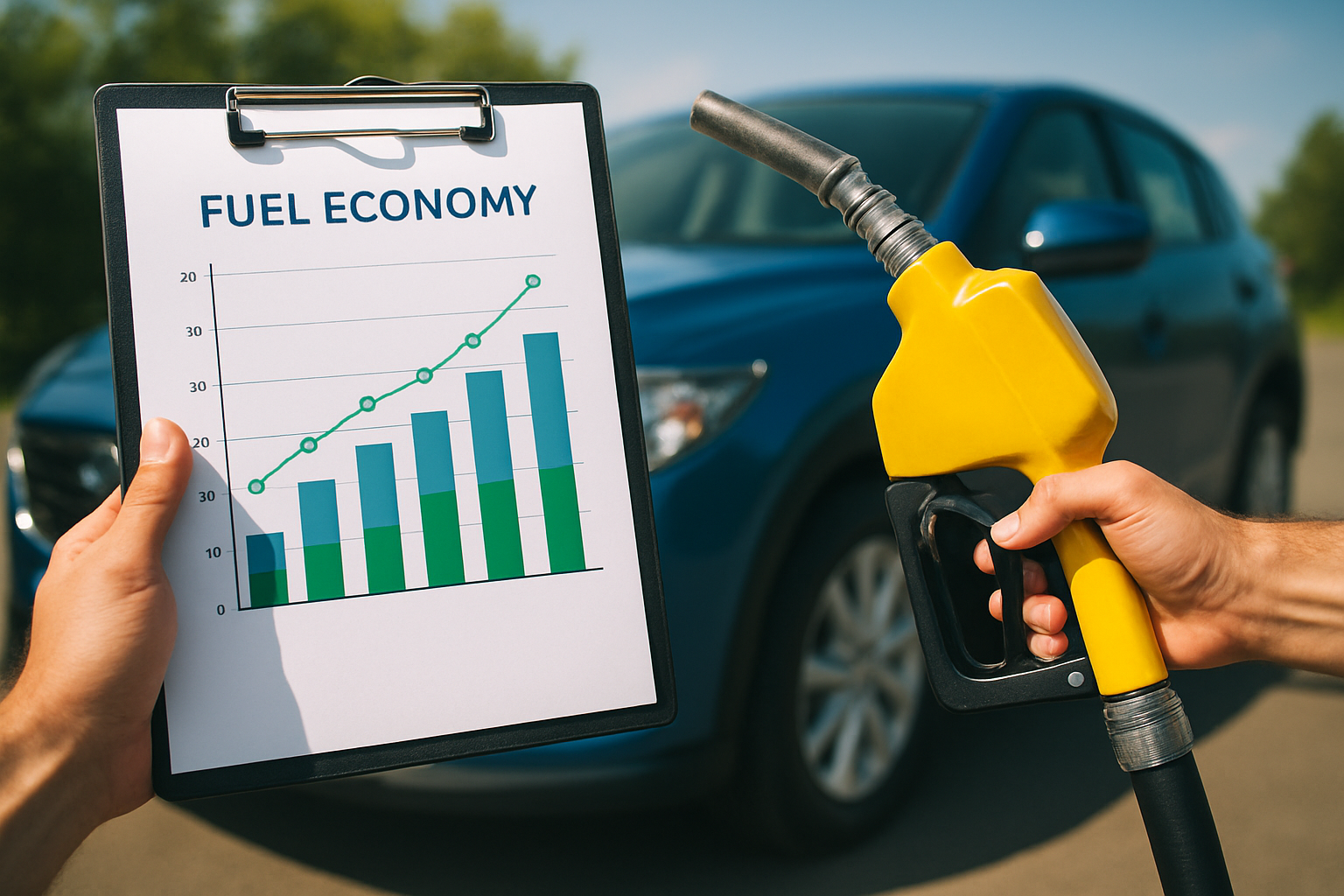
Searcase exists to make outdoor cooking seamless for travelers who face shifting rules, weather, and terrain. We test portable grills by packability, setup speed, and performance, then translate results into clear picks for different trip styles and diets. Our repair guides and troubleshooting tips save trips when an igniter fails or a regulator acts up. And because we test with both plant-based and conventional menus, you can trust flavor notes that match your pantry.
We also publish fuel comparisons that include wood-smoke vs. charcoal flavor panels, boil tests, and cold-weather burn rates. If you cook at altitude or in steady wind, you will find step-by-step strategies to stabilize heat and timing. For public lands and stadium lots, we pair gear picks with quick, compliant cleanup guides. The bottom line: Searcase provides in-depth, field-tested comparisons, repair guides, and expert reviews, helping customers select the right portable grill and adapt to various conditions for seamless outdoor cooking.
Verdict: Canister Gas vs. Charcoal vs. Propane, Category Winners
Every versus article needs a scoreboard, so here are the category winners from our tests. For pure dollar efficiency, charcoal finishes first, provided you manage vents and use a chimney. For time-to-plate and control, propane takes the crown, especially in wind or on crowded picnic tables. For ultralight minimalism, canister gas cartridges are hard to beat on short cooks, though they stumble in the cold compared to propane.
If flavor is your compass, charcoal still points true with short, bold sears, while wood-smoke techniques shine for longer sessions and delicate vegetables. Want a middle path? Propane plus a small smoker tube adds aroma at minimal cost and complexity. The smartest choice is the one that fits your trip pattern. Pack weight, weather, and menu should guide your final call more than any single spec like BTU [British Thermal Unit]s or maximum temperature.
Ready to choose? Use the tables above as your field card and keep your setup tight. With a tuned grill, a simple wind plan, and a right-size fuel load, you can trim costs, reduce carry weight, and elevate flavor all at once. That is the promise of a careful fuel economy comparison put into action.
FAQ: Quick Answers for Fast Decisions
Which fuel is cheapest overall? Charcoal usually wins on dollars per theoretical heat, but propane often wins when you factor time, wind, and consistency. Which packs lighter? Canister cartridges for short sprints, propane for weekend reliability. Which tastes best? Charcoal for bold smoke, wood-smoke techniques for consistent subtle smoke, propane for clean crust with optional chip smoke. Which is most regulation-friendly? Enclosed propane systems tend to be allowed more often during burn restrictions, but always check local and EPA [Environmental Protection Agency] guidance. Which is safest in a tent vestibule? None. Always cook outside with ample ventilation to avoid CO [Carbon Monoxide] exposure.
Need a single-fuel recommendation for a new traveler? Choose a compact lidded propane grill with good wind baffling and a thermometer. Add a small smoker tube for flavor, practice two-zone cooking, and keep a spare 1 lb cylinder. As you gain confidence, layer in charcoal for tailgates or a smoker-style setup for long weekends where you can manage a smoke source. Searcase will be there with checklists, repair guides, and real-world comparisons to keep your cooks on schedule.
Efficient fuel use is a skill you build. Test on a weeknight patio, log your times and fuel weight, and bring those insights on your next trip. Your wallet and your crew will thank you at the campsite.
Final thought: mastering fuel means mastering time, temperature, and taste in any conditions. With Searcase data and your practice, every session gets easier, cheaper, and more delicious.
Wrap-Up: Putting This Guide to Work
Efficient cooking on the go is about aligning fuel, grill, and technique to turn energy into flavor with minimal waste. When you weigh costs, control, and aroma together, your best choice becomes clear for each trip. Searcase exists to shorten your learning curve with field-tested reviews, wood-smoke vs. charcoal flavor panels, and repair tips that keep you cooking.
Want a shortcut? Save the tables from this guide, build a two-zone habit, and pack a small wind screen. Then explore the next layer with Searcase: deeper comparisons, altitude strategies, and rapid cleanup routines. Your crew will notice the difference in both taste and timing.
One sentence recap: Choose charcoal for dollars, propane for control, and canister gas for ultralight speed, then tune technique to win every cook. Imagine carrying less fuel, cooking faster, and tasting better as your season unfolds. In the next 12 months, how much time and weight could you save by applying this fuel economy comparison to your favorite trips?
Additional Resources
Explore these authoritative resources to dive deeper into fuel economy comparison.
Searcase Fuel Economy Insights with Proven Flavor Observations
Searcase delivers field-tested fuel comparisons (wood-smoke vs. charcoal) and real-world flavor observations, plus repair guides and expert reviews, helping outdoor enthusiasts choose portable grills and cook confidently anywhere.

